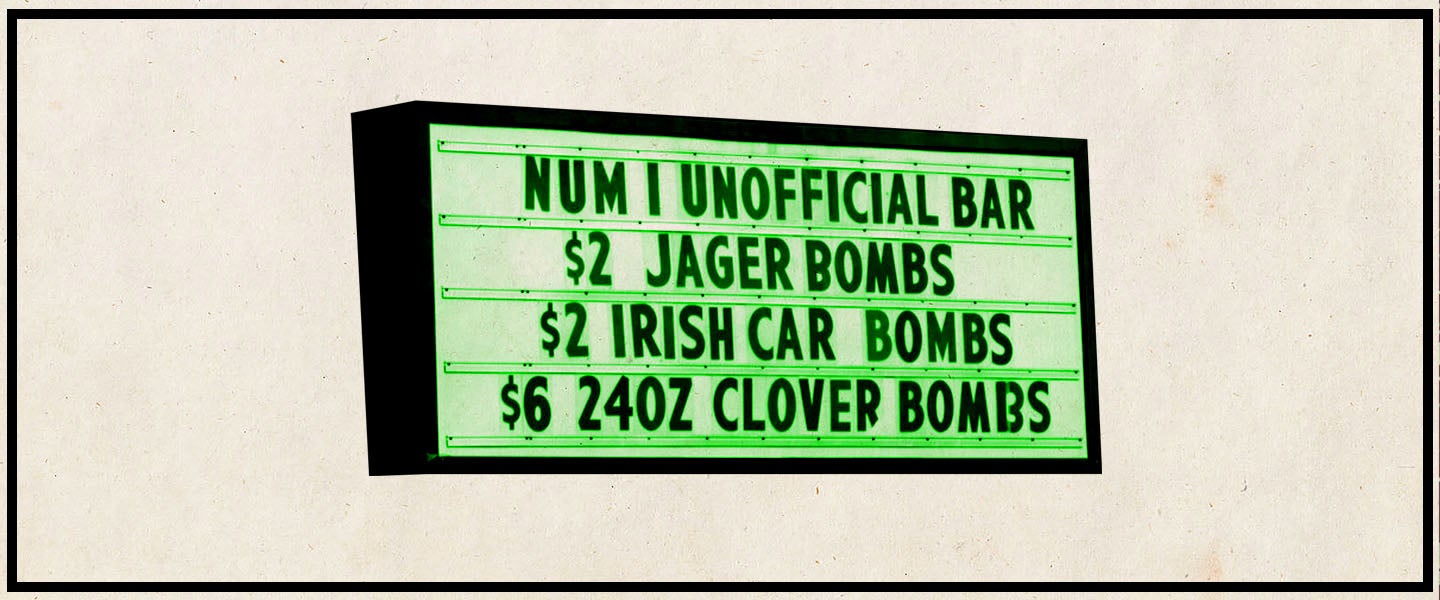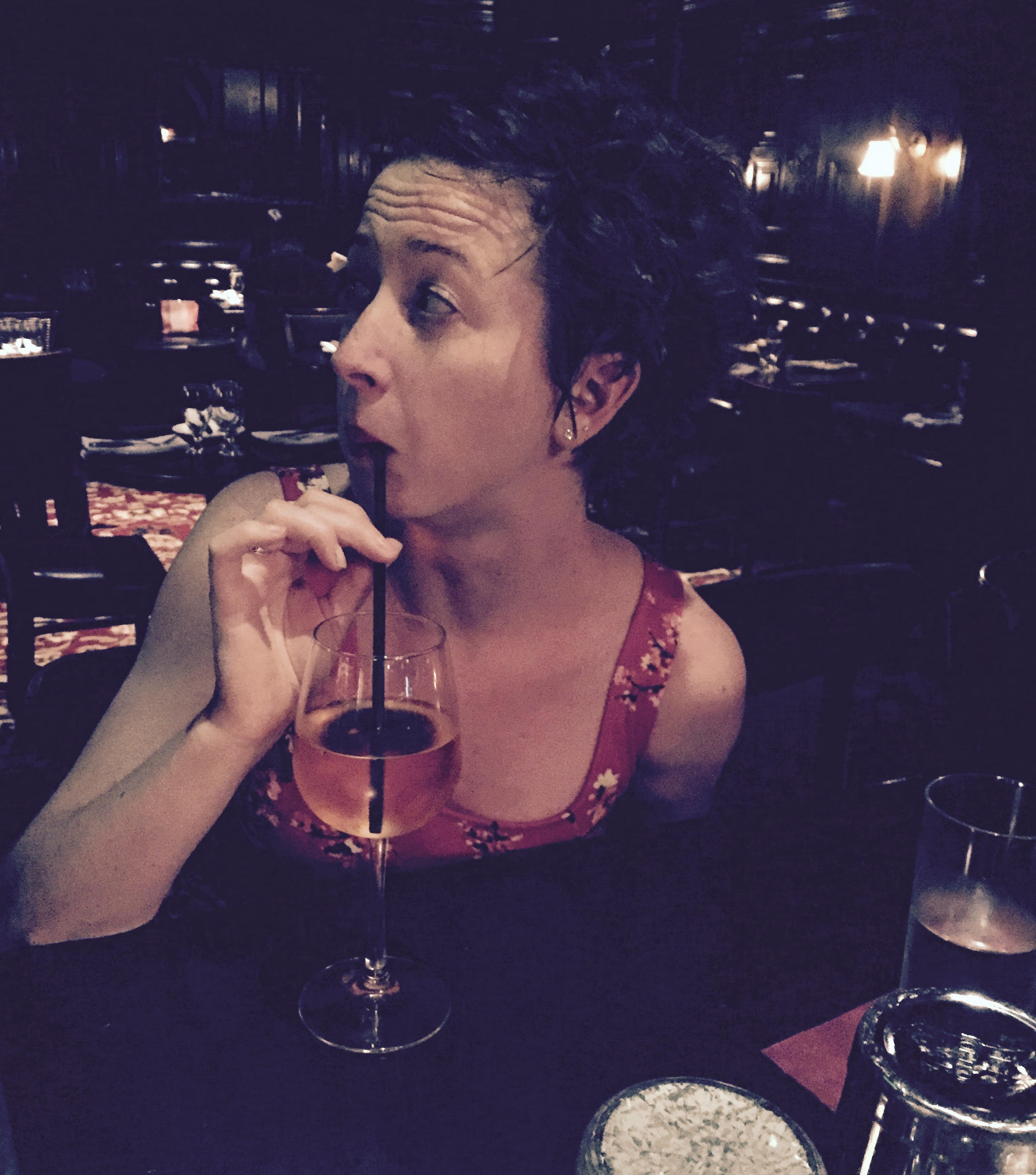I don’t always enjoy telling people they can’t have the drink they’ve asked me for, but when I do, it’s because someone ordered an Irish car bomb.
Look, I get it: It’s just a drink. But here’s the thing: Unless you crawled out from under a rock yesterday or have zero working knowledge of either 20th-century European history or the English language, you know it’s at the very least a disservice to the Irish culture you claim to be celebrating on St. Patrick’s Day, if not downright offensive.You wouldn’t order a suicide bomb on the Fourth of July, or a pulse shot during Pride, right?
So it is with the Irish car bomb: It’s an insensitive and traumatic reminder of a dark and painful period of Ireland’s national history.
“Car bombs are bad business and deeply traumatizing to survivors and families who have lost someone,” Niall O’Dowd wrote in Irish Central in 2017.
But it’s ironic, you say. No, no, it isn’t.
O’Dowd also pointed out that unlike, say, Kamikaze shots, named for the Japanese suicide pilots in WWII, there’s only one way to interpret the phrase “Irish car bomb.” “[A Kamikaze shot] is not called the Pearl Harbor victory shot, so it is a deflected blow and many may see it in a different context and not make the connection. There is only one way to see the Irish car bomb.”
That one way is a brutal act of terrorism.
Things might be a little different if the now-infamous drink — a drop-shot of Bailey’s Irish Cream and Jameson into a half pint of Guinness — had originated in the Emerald Isle, but like most things offensive and dealing with cultural appropriation, the car bomb is a purely American creation.
For the record, Charles Oat, the Connecticut-based bartender who created and christened the car bomb, didn’t mean to name it after an act of violence. It was 1979 and “Baileys Irish Cream had just come to America,” Oat told the Guardian a few years back. “We were drinking and the bartenders were putting Baileys in everything. I was having Baileys with Kahlúa. I realized we weren’t getting anywhere, because both Baileys and Kahlúa are pretty low in alcohol. I asked for some Irish whiskey and poured it in the shot and it boiled up,” he said.
The combination went deliciously well with a Guinness on the side. It didn’t take long for the idea to drop the shot into the Guinness to take root.
“We didn’t think anything of it,” Oat said. “We just said, ‘Bombs away!’”
Oat has repeatedly (and publicly) apologized and expressed his regret for the name of the drink. “Of course I wish I could take it back,” he said on WTNH TV, New Haven’s local news, in 2010.
So do I, friend, so do I.
The same goes for a black and tan.
While it’s unclear who, exactly, started calling the layered half-Guinness, half-light-ale/-lager combination a black and tan, it’s pretty obvious why they did so: When poured correctly, ale or lager on the bottom, Guinness floated on top, you end up with a pint that is, well, half black and half tan.
Just try really hard not to call it that.
The Black and Tans were how the Irish referred to the English paramilitary that occupied Ireland in 1920 and 1921. Largely culled from British WWI veterans, the Black and Tans were recruited to suppress the Irish Independence movement and were famous not just for their black-and-tan uniforms but for their slaughtering of civilians:
“If a police barracks is burned or if the barracks already occupied is not suitable, then the best house in the locality is to be commandeered, the occupants thrown into the gutter. Let them die there — the more the merrier. Should the order (“Hands Up”) not be immediately obeyed, shoot and shoot with effect. If the persons approaching (a patrol) carry their hands in their pockets, or are in any way suspicious-looking, shoot them down. You may make mistakes occasionally and innocent persons may be shot, but that cannot be helped, and you are bound to get the right parties some time. The more you shoot, the better I will like you, and I assure you no policeman will get into trouble for shooting any man.”
This order came from Lieutenant Colonel Gerald Smyth, who was later executed by the Irish Republican Army.
Now, no one is going to go Boondock Saints on you, even in an Irish bar, if you order a black and tan or a car bomb tomorrow, but the look you’ll likely get from the bartender, especially in an Irish bar, will make you wish someone would take you out back and put you out of your misery.
Besides, there are much better drinks that are much more appropriate for celebrating St. Patrick’s day.
How about…
So named for the song “It’s a Long Road to Tipperary,” the anthem for homesick Irish soldiers in World War I (Tipperary is an Irish county), a Tipperary cocktail combines Irish whiskey with green chartreuse and sweet vermouth for a zesty and wicked boozy sipper of a drink.
If you’re not Irish or of Irish heritage, odds are you’re celebrating March 17th in homage to Ireland’s legendary drinking culture (no shade, but tons of people will be doing exactly that). What better way to do so than with a whiskey-spiked coffee first thing in the morning?
I should say, though, that a traditional Irish coffee does not have Bailey’s Irish cream, or any other cream-like booze, in it.
An Irish coffee should have four ingredients: Irish whiskey, sugar, coffee and real whipped cream (like, cream beat or shaken until it’s thick and spongy — none of this aerated, comes-in-a-can nonsense).
That’s it.
First crafted in 1888, the Irish cocktail combines Irish whiskey with absinthe, bitters, maraschino and a dry orange liqueur. It is, for reasons I truly don’t understand, garnished with an olive.
These are much more palatable, completely inoffensive options for getting your drink on on Saint Patrick’s Day.
You can, of course, ignore everything I’ve said and drink whatever the fuck you want tomorrow, or any day, for that matter.
That’d be the Irish thing to do, after all.
Sláinte.

